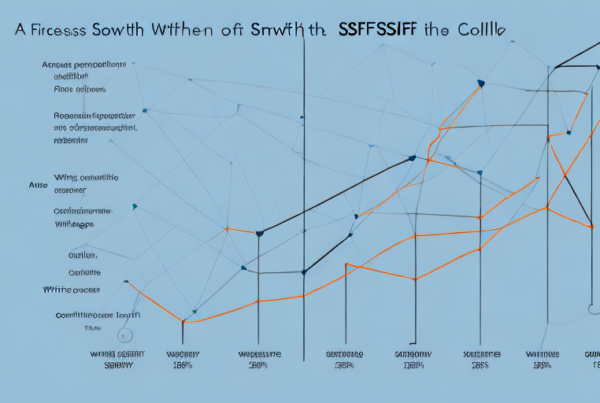Australia’s retirement landscape has undergone significant changes in recent years, with the growing popularity of self-managed super funds (SMSFs) at the forefront of this transformation. SMSFs provide individuals with greater control and flexibility over their retirement savings, enabling them to tailor investment strategies to their specific needs and goals.
Understanding SMSFs and Their Growing Popularity in Australia
Self-managed super funds, as the name suggests, are superannuation funds that are entirely managed by their members. SMSFs offer more control and investment flexibility than traditional superannuation funds, which are typically managed by a third-party trustee. An increasing number of Australians are turning to SMSFs as a way to take greater control over their retirement savings.
What is a Self-Managed Super Fund (SMSF)?
A self-managed super fund is a type of superannuation fund where members also act as trustees. SMSFs can have up to four members, all of whom are responsible for managing and investing the fund’s assets. SMSF trustees must comply with strict government regulations and reporting requirements, however, SMSFs offer greater control and flexibility over investment strategies compared to traditional superannuation funds.
One of the main reasons why SMSFs are becoming increasingly popular is because they give members more control over their retirement savings. With an SMSF, members can choose where to invest their superannuation funds, giving them a wide range of investment options from shares and term deposits to property and collectables. This level of control is particularly attractive to those who have a good understanding of investment markets and want to take an active role in managing their retirement savings.
Another benefit of SMSFs is that they enable members to consolidate their superannuation funds, making it easier to manage their retirement savings in a single fund. This can be particularly useful for those who have changed jobs multiple times and have accumulated superannuation funds with different providers. Consolidating these funds into an SMSF can simplify the management of retirement savings and potentially reduce fees and charges.
The Rise of SMSFs in Australia
Over the past decade, the number of SMSFs in Australia has grown significantly. According to the Australian Taxation Office, there were approximately 600,000 SMSFs in Australia as of June 2020, with around 1.1 million members. The ATO also notes that SMSFs hold over $747 billion in assets, making them a significant player in the Australian investment landscape.
The popularity of SMSFs can be attributed to a number of factors, including the desire for greater control over retirement savings, the potential for tax benefits, and the ability to invest in a wider range of assets. Additionally, the COVID-19 pandemic has highlighted the importance of having a strong financial plan in place, which may have led more Australians to consider SMSFs as a way to take control of their retirement savings.
It’s important to note that while SMSFs offer many benefits, they also come with greater responsibilities and risks. SMSF trustees must comply with strict government regulations and reporting requirements, and failure to do so can result in significant penalties. Additionally, investing in certain assets, such as property and collectables, can be complex and require a high level of expertise.
Despite these challenges, SMSFs continue to grow in popularity in Australia. As more Australians seek greater control over their retirement savings and look for ways to diversify their investments, it’s likely that the number of SMSFs will continue to rise in the coming years.
The Role of Technology in SMSF Management
The rise of self-managed super funds (SMSFs) has been on the rise in Australia over the past decade, with more and more individuals seeking greater control over their retirement savings. This coincides with the growth of digital technology, which has revolutionised the way in which SMSFs are managed and administered.
Digital Platforms for SMSF Administration
The introduction of digital platforms has made it easier for SMSF trustees to manage their funds remotely. These platforms offer a range of features, from online reporting and document management to automated accounting and compliance functions. SMSF trustees can now access their fund information from anywhere, at any time, using their mobile device or computer.
One of the benefits of digital platforms is that they offer a more efficient way of managing SMSFs. Trustees can easily monitor their fund’s performance, view investment reports, and keep track of their fund’s compliance obligations. This not only saves time, but it also reduces the risk of errors and mistakes, which can have significant consequences for SMSF trustees.
Automation and Efficiency in SMSF Management
Automation has played a significant role in SMSF management, allowing trustees to streamline administrative tasks and focus more on investment strategies. Automated processes such as data feeds and bank reconciliations can significantly improve the efficiency of SMSF management, reducing the time needed to manage tasks such as accounting and reporting.
Furthermore, automation has made it easier for SMSF trustees to comply with regulatory requirements. Digital platforms can automatically generate reports and statements, and provide alerts when compliance deadlines are approaching. This helps to ensure that SMSFs remain compliant and avoid costly penalties.
Enhanced Reporting and Analytics for SMSFs
The growth of digital technology has also enabled SMSF trustees to access enhanced reporting and analytics tools. These tools offer deeper insights into fund performance, enabling trustees to make informed investment decisions and adjust investment strategies based on market conditions.
For example, SMSF trustees can use analytics tools to track their fund’s performance against industry benchmarks, identify trends and patterns in investment returns, and monitor the performance of individual investments. This information can be used to make informed decisions about asset allocation, diversification, and risk management.
In conclusion, the role of technology in SMSF management cannot be overstated. Digital platforms, automation, and enhanced reporting and analytics tools have made it easier for SMSF trustees to manage their funds, comply with regulatory requirements, and make informed investment decisions. As technology continues to evolve, it is likely that we will see even more innovative solutions emerge, further improving the efficiency and effectiveness of SMSF management.
The Impact of SMSF Management on Retirement Planning
The benefits of SMSFs for retirement planning are significant, providing greater control and investment flexibility than traditional superannuation funds. SMSFs can also enable members to tailor their retirement income streams and minimise tax obligations, ensuring that they receive the maximum benefit from their retirement savings.
Retirement planning is a critical aspect of financial planning, and SMSFs offer a compelling option for those seeking greater control and flexibility in managing their retirement savings. SMSFs are self-managed, meaning that the members of the fund act as trustees and are responsible for the fund’s management and investment decisions.
While SMSFs require more effort and expertise than traditional superannuation funds, they offer a range of benefits that can make them a more attractive option for retirement planning. One of the most significant advantages of SMSFs is the control they offer over investment strategies.
Greater Control and Flexibility in Investment Strategies
One key benefit of SMSFs is the control they offer over investment strategies. SMSF trustees can choose where to invest their funds, giving them the flexibility to pursue investment strategies that align with their goals and risk tolerance levels. This means that SMSF members can invest in a wide range of assets, including property, shares, and cash, providing greater diversification and potentially higher returns.
Furthermore, SMSFs offer greater transparency in investment decisions, with members able to access real-time information on the fund’s performance and investments. This enables members to make informed decisions about their investments and adjust their strategies as needed.
Improved Tax Planning and Minimisation
SMSFs also offer significant tax planning advantages. SMSF trustees can manage their tax obligations by making contributions and withdrawals at specific times to maximise their tax benefits. Additionally, SMSFs enable members to hold assets in the fund until retirement, reducing the need for frequent buying and selling of assets and associated capital gains tax.
Furthermore, SMSFs offer greater flexibility in managing tax obligations, with members able to choose between accumulation and pension phase, depending on their individual circumstances. This means that SMSF members can minimise their tax obligations and maximise their retirement income, providing greater financial security in retirement.
Customised Retirement Income Streams
SMSFs provide members with greater control over their retirement income streams, enabling them to tailor their income to their specific needs and goals. This can be particularly beneficial for members with diverse retirement income needs, such as those with multiple sources of retirement income or members with non-standard retirement goals.
Furthermore, SMSFs offer greater flexibility in managing retirement income streams, with members able to choose between lump-sum payments, regular income streams, or a combination of both. This means that SMSF members can customise their retirement income to suit their individual needs and goals, providing greater financial security and peace of mind in retirement.
In conclusion, SMSFs offer a compelling option for those seeking greater control and flexibility in managing their retirement savings. With greater control over investment strategies, improved tax planning and minimisation, and customised retirement income streams, SMSFs can provide significant benefits for retirement planning.
The Challenges and Risks of SMSF Management
While SMSFs offer significant advantages for retirement planning, managing an SMSF is not without challenges and risks.
Regulatory Compliance and Reporting Requirements
SMSF trustees must comply with strict government regulations and reporting requirements, which can be time-consuming and difficult to navigate without the assistance of financial advisors or administration services. Inadequate compliance can result in significant penalties, making it essential for SMSF trustees to stay up-to-date with regulatory changes and reporting obligations.
The Importance of Financial Knowledge and Expertise
SMSF trustees must also have an adequate level of financial knowledge and expertise to manage their funds effectively. This can be challenging for some members, particularly those with limited experience in investment management or accounting.
Balancing Risk and Return in SMSF Investments
SMSF trustees must balance risk and return when managing their funds, ensuring that they are pursuing investment strategies that align with their investment horizon, risk tolerance, and retirement goals. This can be challenging, particularly during times of market volatility or economic uncertainty.
Conclusion:The Future of Retirement Planning in Australia
Self-managed super funds have revolutionised retirement planning in Australia, providing individuals with greater control and flexibility over their retirement savings. With the growth of digital technology and enhanced reporting and analytics tools, SMSFs are likely to play an increasingly significant role in the Australian investment landscape in the coming years.
While managing an SMSF is not without challenges and risks, the benefits of SMSFs for retirement planning are significant. SMSFs provide members with greater control over investment strategies, customised retirement income streams, and improved tax planning and minimisation. As such, SMSFs are a valuable tool for Australians seeking to maximise their retirement savings and secure a comfortable retirement.




